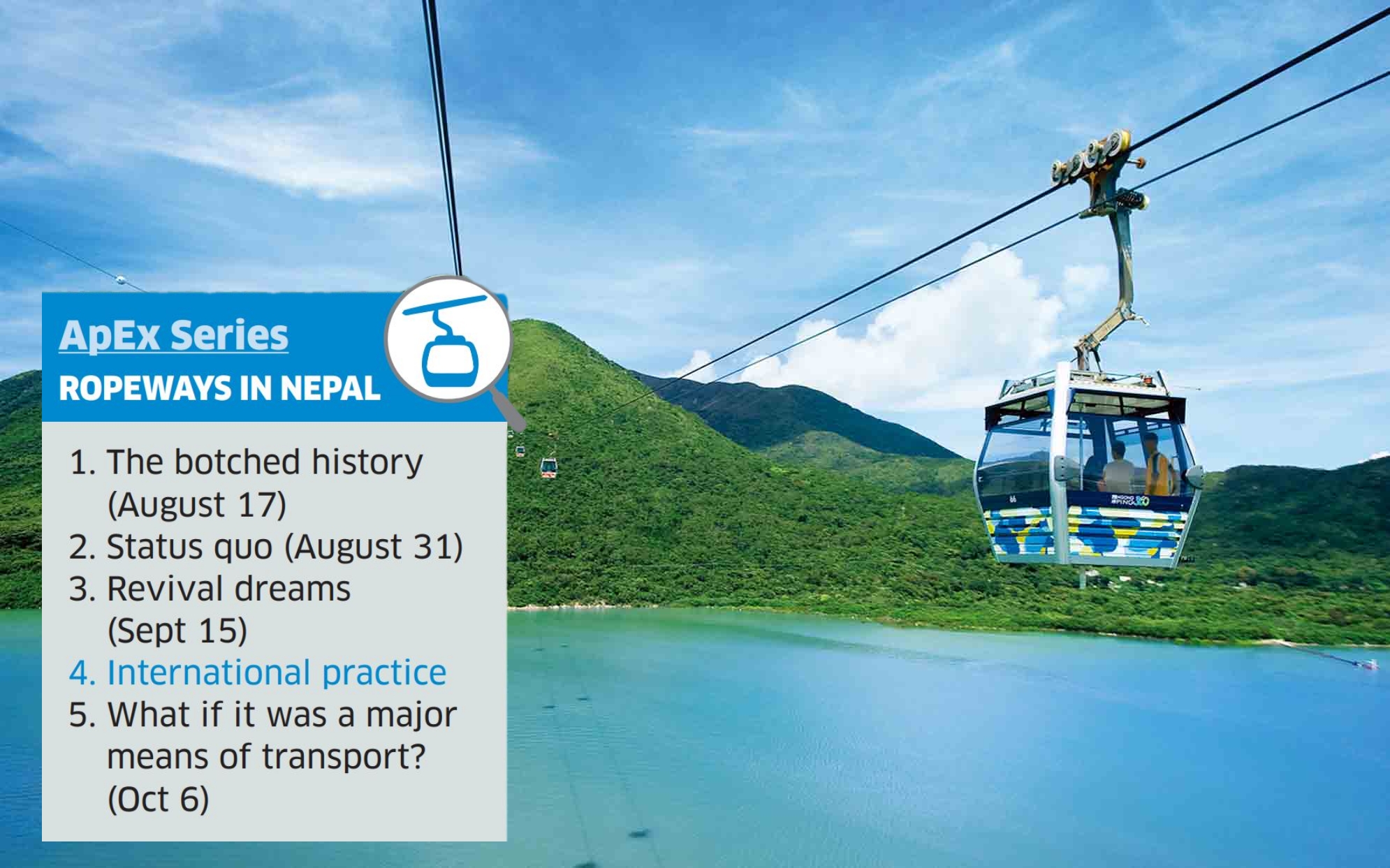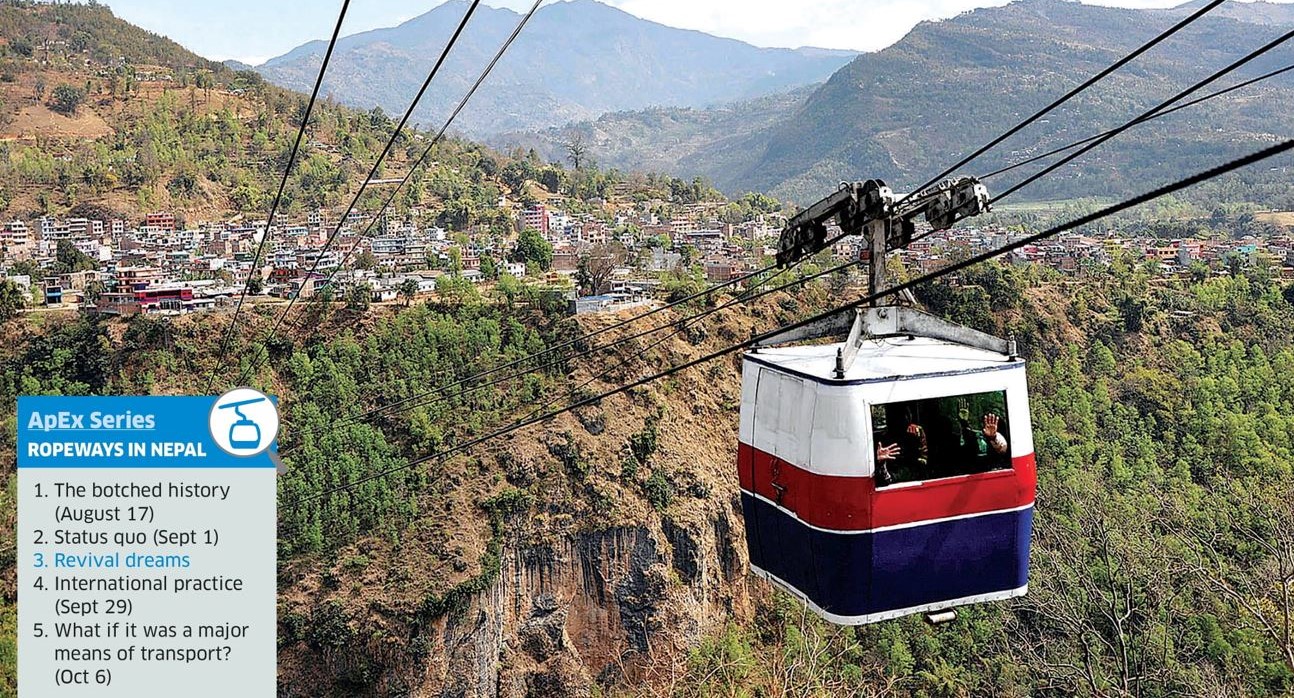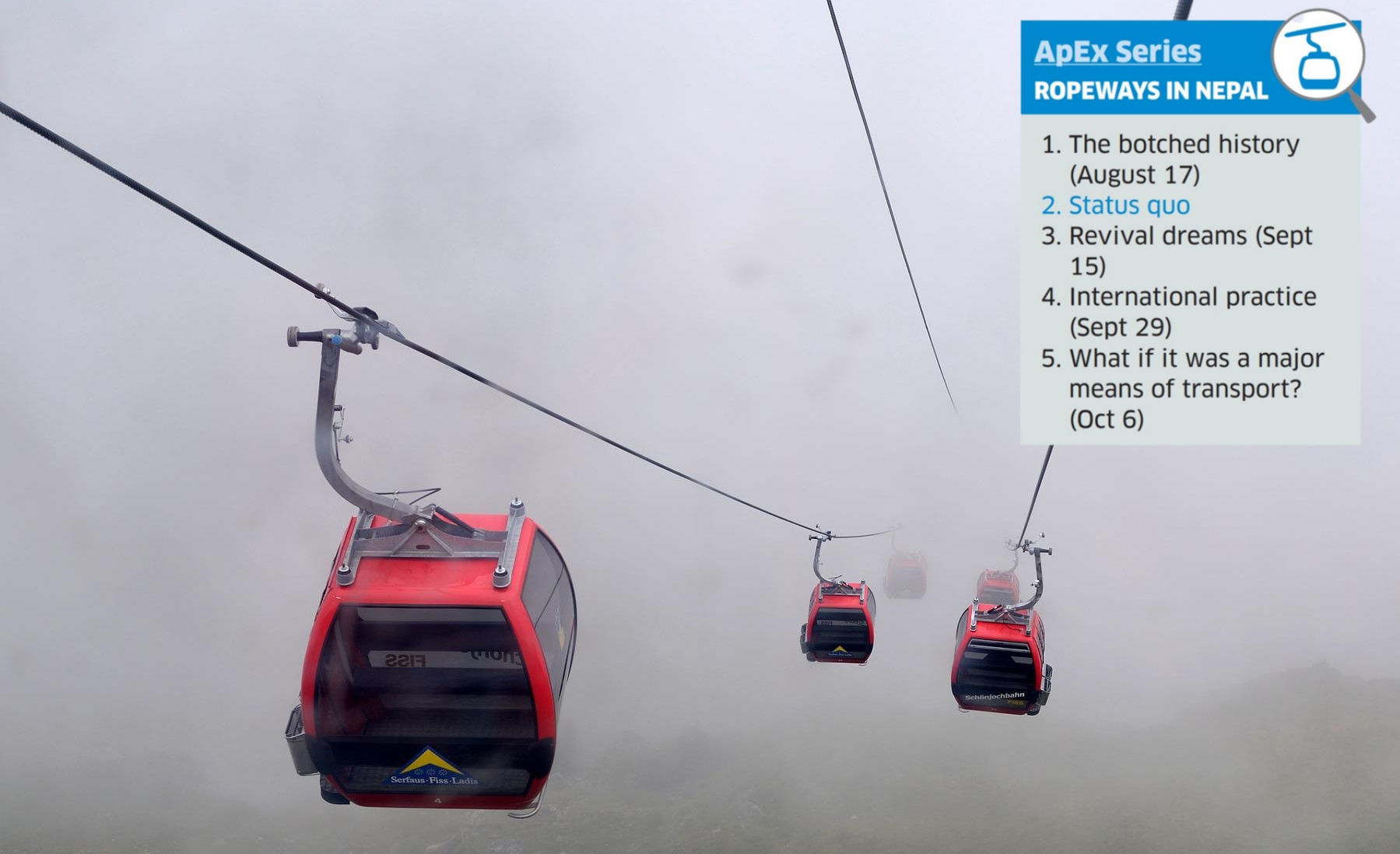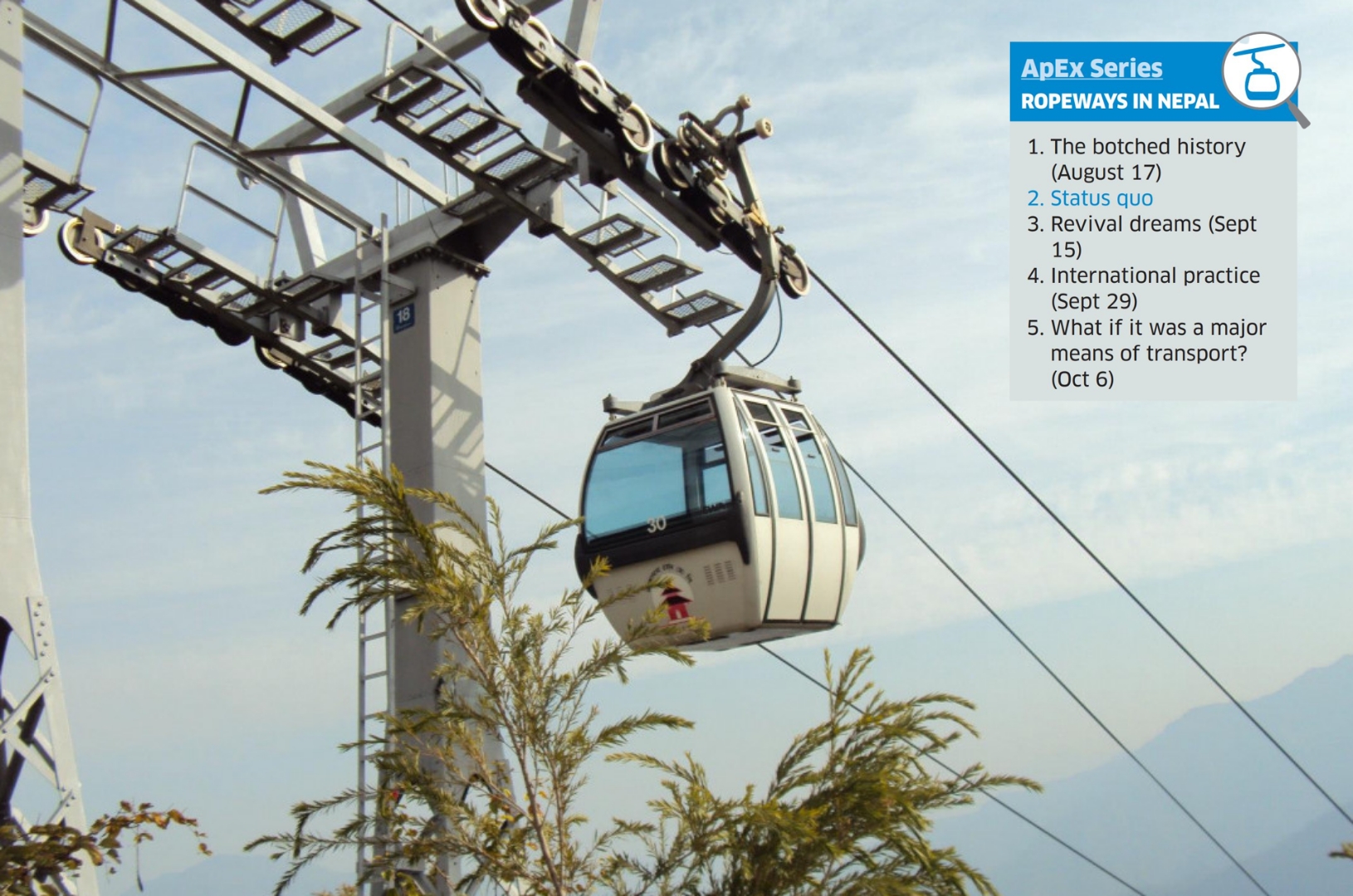Nepal’s unwavering commitment to SAARC
Deepening and widening regional cooperation has always been Nepal’s foreign policy priority. That is why it has actively promoted regional and sub-regional bodies. Nepal is a member of multiple regional bodies such South Asian Association for Regional Cooperation (SAARC), the Bay of Bengal Initiative for Multi-Sectoral Technical and Economic Cooperation (BIMSTEC), and the Asia Cooperation Dialogue (ACD) established in 2002. Nepal also joined the Shanghai Cooperation Organization (SCO) as a dialogue partner in 2016.
The country aspires to make those regional platforms effective and result-oriented. SAARC, the oldest among them, was formed in 1985. From its inception Nepal has been playing an active role in the SAARC process. Even back in the 1970s King Birendra was busy sketching out a framework for the regional body.
Addressing a gathering of foreign delegates at the 26th Colombo Plan Consultative Meeting in Kathmandu in 1977, King Birendra had pitched the idea of tapping nature for mutual benefit of Nepal, India, China, Bhutan Bangladesh, Pakistan, and Sri Lanka. At the time, King Birendra’s focus was on collaboration on water resources.
“Acknowledging Nepal’s vital role in the formation of the regional body, member countries had agreed to keep SAARC Secretariat in Kathmandu,” says former diplomat Bhek Bahadur Thapa. According to him, SAARC came into being mainly at the behest of Nepal and Bangladesh, at a time other countries were mostly unenthusiastic. Bangladesh had proposed to have the secretariat in Dhaka, but King Birendra insisted on keeping it in Kathmandu.
Along with the Secretariat, two vital centers—the SAARC Tuberculosis Centre and SAARC Information Center—were also established in Nepal. Nepal had held the third summit of SAARC in 1987, the same year its secretariat was established in Kathmandu, in what was a milestone in strengthening the institutional framework of SAARC.
A major aspect of Nepal’s engagement in the SAARC process is its desire to bring China on board. Since 2005 China has been serving as an observer in the regional body. But Nepal is in favor of having China as a full SAARC member. From 2005-to 2006, King Gyanendra has lobbied for the same, much to India’s chagrin.
Says political analyst Lokraj Baral, it is an open secret that King Gyanendra, isolated by the international community, tried to bring China into the SAARC in order to balance India. According to Baral, it was the first time Nepal formally pushed for China’s membership but the idea fell through due to lack of consensus.
But Nepal’s push to bring China as a member of the regional body continued even after Nepal became a republic. For instance, in 2014, just before the 18th summit in Kathmandu, Nepal’s Finance Minister Ram Sharan Mahat and Foreign Minister Mahendra Bahadur Pandey had spoken in favor of elevating China’s role. Pandey had said that if all members agreed, Nepal would have no problem in making China a SAARC member. Even in official negotiations, Nepal had raised this issue.
As a SAARC member state, Nepal has taken a lead in several areas. Former Ambassador Madhuban Prasad Poudel, who served as a director in SAARC Secretariat from 1999 to 2002, says Nepal initially pushed agriculture, health and population, postal services and metrology as priority areas.
Nepal has been a strong advocate of sub-regional cooperation under the broader SAARC framework. Since 1990, Nepal had been continuously raising the issue. Its wish was fulfilled at the 10th SAARC Summit in Colombo in 1998. “With the objective of enhancing regional solidarity and promoting overall development within SAARC,” the summit communique read, “the Heads of State or Government encouraged the development of specific projects relevant to the individual needs of three or more [states].”
Subsequently, Bangladesh, Bhutan, and Nepal requested the assistance of the Asian Development Bank to facilitate economic cooperation, writes Sangita Thapaliyal, a New Delhi-based South Asian expert, in her journal article published by India International Center. This request, according to her, led to the implementation of South Asian sub-region programs in 2001. This request, however, did not bear any fruit.
Nepal also actively promoted sub-regional cooperation known as BBIN (Bhutan, Bangladesh, India, and Nepal) which aims to connect the major cities of four countries by a bus service. Nepal was one of the first countries to complete the domestic procedures to implement the agreement. Then, in the 2002 SAARC Summit in Kathmandu, Nepal proposed a SAARC award to honor the outstanding work of individuals and organizations within the region in the fields of peace, development, poverty alleviation, and regional cooperation.
At the 15th SAARC Summit in 2008 in Colombo, Nepal offered to host the ministerial meeting on poverty alleviation in South Asia. Earlier, the 11th Summit in Kathmandu had decided to reconstitute the Independent South Asian Commission on Poverty Alleviation, with Nepal as its convener and Bangladesh as co-convener. Member countries requested Nepal to come up with a concept note. According to Poudel, Nepal has always taken a lead on poverty alleviation in the region.
The 2010 sixteenth SAARC summit in Thimpu was held under the theme of a Green and Happy South Asia. At this summit, Nepal took the initiative to organize a ministerial meeting of mountainous countries in Kathmandu in the same year. Then, at the 18th SAARC Summit held in Kathmandu, Nepal played an active role in initiating cooperation in the field of migration, cooperatives, and social protection.
Nepal has also been playing a proactive role in tourism-promotion in the region. Nepal hosted the tourism minister’s meeting in January 2011 which reviewed the progress made in the SAARC action plan on tourism-promotion.
Nepal has been continuously pushing for strengthening the SAARC process. Since 2014, Nepal has been serving as a chair of SAARC.
India has of late prioritized BIMSTEC over SAARC but Nepali leaders maintain that one cannot substitute another. At both bilateral and multilateral platforms, Nepal has been raising the issue of revival of the SAARC process. Nepal is of the view that India and Pakistan should put their differences aside for the benefit of the whole region.
SAARC: A free trade area that never was
The 11th summit of the South Asian Association for Regional Cooperation (SAARC) held in Kathmandu in 2002 agreed to the development of a South Asian Economic Union by 2020 in a phase-wise process. This commitment was never implemented.
Again, during the 18th summit in 2014, regional leaders renewed their commitment to the same through a free trade area, customs union, common market, and common economic and monetary unions. This pledge too never saw the light of the day, as the SAARC process remains stalled after 2016 over India-Pakistan tension.
The regional body was formed to promote economic growth in member states. And trade integration, it was thought, was the key to unlocking such growth.
With the same thinking, the South Asian Free Trade Agreement (SAFTA) under the aegis of the regional body came into force in 2006. But it has not contributed much in intra-regional trade.
With intra-regional trade at less than five percent of the eight countries’ total foreign trade, South Asia is the least integrated region in the world, heavily dwarfed by East Asia’s 35 percent and Europe’s 60 percent, according to a 2019 World Bank report.
Don McLain Gill, a resident fellow at Manila-based International Development and Security Cooperation, says SAARC’s creation in 1985 was the result of a new trend towards regional cooperation.
“With SAFTA coming into force, there were hopes of maximizing economic cooperation in the region. However, today, South Asia remains arguably the least integrated region in the world despite its shared history, culture, and geography,” he says.
He says there are salient differences in intra-regional trade in the SAARC and the Association of Southeast Asian Nations (ASEAN). From 1992 to 2017, for example, ASEAN’s intra-regional trade grew exponentially, while SAARC’s pretty much stagnated.
Unlike in SAARC, the asymmetry in size and capacity of member states was never an impediment to regional trade under ASEAN.
There are a host of reasons behind SAFTA’s sorry state. Tariff and non-tariff barriers, extensive sensitive list, poor connectivity, visa restrictions, lack of proper border infrastructure and booming informal trade are some of the major ones.
Purushottam Ojha, a former commerce secretary, says one of the major hindrances to intra-regional trade are the extensive sensitive lists, which are lists of goods exempted from tariff concessions.
The inventory of goods on the sensitive lists is very high. Despite the commitment to bringing them down, the member states haven’t been able to do so.
“Nepal, Bangladesh, Bhutan, Sri Lanka have put 900 to 1,000 products under sensitive lists to collect revenue,” Ojha says. The basic principle of free trade is to liberalize trade by increasing investment and collecting taxes, he adds, but the least-developed countries of the region are loath to tweaking with their custom revenues.
He argues SAFTA cannot be implemented until and unless these countries review their sensitive list.
Although there is a provision of reviewing the lists at least every four years, there hasn’t been much progress.
Similarly, unchecked informal trade has also hamstrung SAFTA. Although informal trade is not included in official government figures, the World Bank estimates nearly 50 percent of trade in South Asia is informal. For example, there is a large volume of informal trade between Nepal and India, and Nepal and Bangladesh.
Para-tariffs also limit intra-regional trade. Para-tariffs are taxes levied on imports, but not on domestic products. SAARC member countries levy hefty border processing charges, much more than standard import-export tariffs. Bangladesh, Sri Lanka, and Pakistan are among the countries with high para-tariffs.
These para-tariffs, along with the sensitive lists, have rendered the region’s free trade agreement ineffective.
According to the World Bank, average tariffs in South Asia were 13.6 percent compared to 7.3 percent in South East Asia.
“Lack of comparative advantage, infrastructure issues, power asymmetry, and India-Pakistan security dilemma are other hindrances to intra-regional trade,” adds Gill.
Poor connectivity is another big obstacle. There are no prominent connectivity projects in the region. Although India has been taking numerous bilateral initiatives to enhance connectivity, the capitals and major cities of South Asian countries are still poorly linked.
Transport logistics and border infrastructure in the region are also poor, resulting in high import and export costs. It takes several weeks to clear goods at some border points. There hasn’t been any progress on product harmonization and quality control either.
The long-standing dispute between India and Pakistan, two largest SAARC member states in terms of population , is another big hindrance to intra-regional trade.
For a long time there have been talks about making the SAARC region a visa-free regime, to no avail. Some member countries still have rigid visa systems, directly affecting traders in the region. In fact, these traders find it easier to do business with the rest of the world.
The economic and geopolitical situation of South Asia has undergone a sea change since the SAARC member countries implemented SAFTA. With China’s rise, all South Asian states including India are more engaged with China on the economic front.
“Today’s South Asia, through its individual sovereigns wants to harness open-ended regionalism or unbounded regionalism to keep it invested in groupings on its Eastern and Western flanks,” says Dattesh D. Prabhu-Parulekar, assistant professor at the School of International and Area Studies in Goa University, India.
In this regard, China's burgeoning trade and investment links with almost all South Asian nations can no longer be ignored, he adds. “These links undercut SAFTA.”
Moreover, over the past few years, countries in the region have been making good progress in terms of economic growth but their debts have increased as well.
Parulekar says smaller South Asian economies are today bedeviled by debts brought on by profligate borrowing and serious liquidity crises.
“Until these issues are urgently addressed, seamless trade-based regional cooperation and synergies appear unrealistic,” he adds.
He instead suggests focusing on sub-regional mechanisms to enhance trade.
With the SAARC showing diminishing returns for some of its members, he says South Asian nations have now bought into the propositions of ‘mini-lateralism’ and sub-regionalism. “That undercuts SAARC and yet boosts regional integration. BBIN and BIMSTEC are cases in point,” he says.
Gill says the way forward is not to waste more resources on restructuring SAARC, but to strengthen sub-regional mechanisms.
“Enhancing existing sub-regional arrangements such as BIMSTEC, BBIN, and the India-Sri Lanka-Maldives trilateral will help create stable conditions to maximize intra-regional cooperation, not just in trade, but also in areas like defense and socio-cultural exchanges,” he says.
With the entire SAARC process in limbo, chances of SAFTA’s meaningful revival are slim. Better to accept the bitter reality, suggest experts, and move on.
SAARC’s not-so-obvious issues
Age-old India-Pakistan tensions are often blamed for undercutting the effectiveness of the South Asian Association of Regional Cooperation (SAARC).
A good rapport between these countries, the two largest in the region in terms of population and military might, is imperative to give momentum to the SAARC process. But owing to bad blood between them the group’s biennial summit-level meeting has not been held after 2014.
International relations experts say the main reason behind the body’s sluggish progress is its failure to embrace the core principles of regional organizations.
For instance, the internalization of the notions of collective security, prosperity, and dignity by member states contributed to the success of the United Nations after the Second World War.
Shambhu Ram Simkhada, former diplomat and professor at Tribhuvan University, says international relations theorists had initially thought that a similar calculus would work at the regional level.
They argued that countries cannot conduct their foreign policy based only on narrow national interests and called for harmonization of national interests.
“Each country in a grouping has to understand that national interests will be harmonized so that individual country’s national interests are also served in a group-setting. That, at least, was the idea behind regional cooperation. But it could not take root in South Asia,” says Simkhada.
Over the past three-and-a-half-decades, SAARC, the regional bloc of eight South Asian countries, has largely failed to achieve its goal of economic and regional integration.
While the strained Indo-Pak relations could be the main reason behind it, there are other stumbling blocks as well.
Good organizations invariably have good leadership, something SAARC has long been missing. As its largest member with strong influence over its neighbors, India can (and should) take such a leadership role. But it has not been ready to do so.
With India unenthused about regional cooperation under SAARC, other member states have also not come forward to take leadership. Smaller countries can certainly take the lead to revive the stalled SAARC process. This was demonstrated by Nepal and Bangladesh in the 1980s when they played proactive roles in the regional body’s formation. They had convinced both India and Pakistan, which were initially unwilling to join, to come on board.
Amit Ranjan, research fellow at the National University of Singapore, says a regional body needs a leader who can lead through consensus.
“But India-Pakistan tensions and several other issues hinder such consensus,” he adds.
Stability is also a prerequisite for a vibrant and functioning regional cooperation. But political upheavals in member countries have constantly affected the SAARC process.
The SAARC summit could not be held from 1999 to 2002 following a military coup in Pakistan. Similarly, India withdrew from the 2005 Dhaka summit due to its differences with Bangladesh and King Gyanendra’s coup in Nepal.
Right now, barring India and Bhutan, all other South Asian countries are battling some sort of political instability.
In Afghanistan, the Taliban has regained power and the international community is yet to recognize it. Whether other member SAARC countries are ready to share the platform with Taliban representatives remains unclear.
Democracy-deficit in member countries has created hurdles for regional cooperation, say international relations experts.
Another factor hobbling the regional body is the tendency of member countries to engage bilaterally instead of prioritizing regional cooperation. On trade, connectivity, and environmental issues, India mostly engages with individual member countries bilaterally. SAARC has great scope in water and energy cooperation, but India is again dealing with these issues bilaterally, mainly with Nepal, Bhutan, and Bangladesh.
India is also signing bilateral free trade agreements with the countries in the region rather than taking steps to operationalize the South Asian Free Trade Agreement (SAFTA).
“India is giving more attention to bilateral relations instead of working collectively through common platforms,” says Ranjan.
In her 2018 research paper ‘SAARC vs BIMSTEC: The Search for the Ideal Platform for Regional Cooperation’, Joyeeta Bhattacharjee, a senior fellow at Observer Research Foundation, a New Delhi-based think-tank, says bilateralism decreases the countries’ dependence on SAARC to achieve their objectives, making them less interested in pursuing region-level initiatives.
Bilateralism is easier as it entails dealing between only two countries, whereas SAARC—at a regional level—requires one country to deal with seven, she argues in her paper.
Preference for extra-regional trade and the general environment of distrust among member states have also diminished the scope of regional cooperation. Not only with Pakistan, India also has contentious issues with Nepal, Bangladesh and Sri Lanka.
The asymmetry between India and other member countries in terms of population, geography, and economy has made regional cooperation difficult. Smaller countries often see the projects forwarded by India as tools to cement its regional hegemony. This became evident in 2015 when Bhutan, Bangladesh, India, and Nepal agreed to a vehicle agreement, known as BBIN, only for Bhutan to later opt out stating that it cannot regulate the flow of people and goods. Pakistan had refused to join the initiative outright as it came from India.
Simkhada suggests boosting the status and widening the mandate of the SAARC Secretariat to create a more functional regional body. Right now, “SAARC is being treated as no more than a minor administrative body.”
The position of the SAARC secretary-general, he says, is lower than that of an ambassador or a joint secretary of any of its member states.
Insufficient economic resources have further hobbled the regional organization. Member countries are not ready to contribute large funds to finance big connectivity projects. At the same time, some member countries are opposed to receiving financial assistance from SAARC observer states like the US, China, and Japan or from other multi-national donor agencies.
For long, Nepal has been proposing active engagement with observer members to raise funds for big regional projects, to no avail.
A senior Nepali foreign minister official who has long been involved in the SAARC process and who spoke to ApEx on the condition of anonymity, says member countries, particularly India, Pakistan, and Bangladesh are against taking international support. They fear big powers or multilateral institutions could otherwise “impose their own agenda” in the region.
While member countries have divergent and disparate views on regional issues, there is no permanent mechanism to discuss them and bridge the differences.
“Disputes among member countries often hamper consensus building, thus slowing decision-making,” says Bhattacharjee. “SAARC’s inability in this regard has been detrimental for its growth.”
Over the past decade, China’s influence in the SAARC process and as well as in its member states has increased. China was brought in as an observer state at the request of member countries, including Nepal, Bangladesh and Sri Lanka. This did not go down well with India.
Indian policy-makers fear China could use the regional body to make further inroads into its backyard. Experts say this is one reason India has shown little interest in SAARC’s revival.
A former Nepali diplomat who has closely worked with the Kathmandu-based SAARC Secretariat says Nepal, Bangladesh and Pakistan are for China’s greater role in the SAARC process, much to India’s chagrin.
“China itself has shown interest in playing a greater role within SAARC, and India most certainly does not want that,” he says. “This is one reason behind SAARC’s slow progress.”
SAARC: The past, present and future
Many reckon the South Asian Association for Regional Cooperation (SAARC) is dead and there is no point in flogging a dead horse. Perhaps. As India, by far the biggest South Asian power, is more interested in alternative forums like the Bay of Bengal Initiative for Multi-Sectoral and Technical Cooperation (BIMSTEC) and the Bangladesh-Bhutan-India-Nepal (BBIN) initiative—both without Pakistan—it may be wise to go along with the regional behemoth. BIMSTEC just came up with its charter. Granted. Yet it is not without reason that smaller South Asian countries like Nepal and Bangladesh that played a vital role in SAARC’s formation want to retain and revitalize the regional body.
SAARC came into existence in 1985 at the initiative of Bangladeshi President Ziaur Rahman, with unstinted backing and lobbying of Nepali King Birendra. In the Cold War-era, it was common for the US and the USSR, competing superpowers at the time, to try to create blocs of influence. SAARC came into being partly because of the American desire to keep South Asia out of the Soviet grasp—even as India-USSR relations were warming. But SAARC would not have materialized had the smaller South Asian countries not felt the need to collectively bargain for their socio-economic development with the richer world.
SAARC is dear to the likes of Nepal, Bangladesh, Bhutan and Sri Lanka because their leaders have over the years identified with its rationale even as India and Pakistan, the two feuding big powers in South Asia, have not always looked at SAARC kindly.
According to Lailufar Hasmin of the University of Dhaka, “Bangladesh felt that a stable and powerful South Asia was required to ensure its own development. The idea was later crystalized in the organization of SAARC.” Perhaps the same words could be repeated in Nepal’s case.
The idea was that if the region was not consolidated, she adds, its countries could never achieve their potential. This was true in 1985 and it is true today.
Full story here.



















